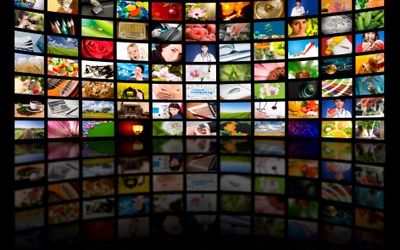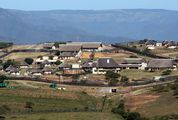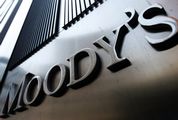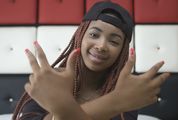TRANSFORMATION is not only about who we hire. Growing up in SA during the 1980s, I remember the first time I saw a black woman and child in a TV commercial. Clearly it was distinct for me, because I hadn’t seen it before. It was for a Lux soap commercial, featuring a woman taking a bath, singing along to Wilson Pickett’s song In The Midnight Hour. She gets carried away and her toddler catches her singing and giggles adorably. It was a cute commercial and something about it stuck in my mind.
When I entered the advertising industry, it was mostly a white, all-boys’ club. Interestingly, though, my first commercial was for the three new Indian channels — The Indian Bouquet on DStv. It was a print advertisement featuring an Indian dancer’s hands. The radio commercial was a cheesy song about Bollywood, salvaged only by the production brilliance of the late Siva Devar. I cringe when I think about it because it was horribly stereotypical. But, we were talking to my people in some way.
Now that we’ve supposedly come a long way, the word "transformation" is tossed around like a shuttlecock, but I’m wondering if transformation is evident in the work we do. To ensure we’re living transformation, we need to attract, hire and retain the right people (another discussion). But transformation is not just about displaying a mixed fruit bowl in our studios; the work we do needs to be transformative and creatively groundbreaking.
The path to this kind of work is undulating, but still navigable. For one, we can start by abandoning our go-to stereotypes — like when we’re advertising cellphone data or washing powder, do we always have to choose a big black woman who shouts her message at the top of her voice?
Does every young black guy need to be a Nike high-top wearing rapper? And when we see an Indian family, do they always have to sit around a dinner table, dressed in traditional garb?
In this country, there’s an everyday uniqueness that sits alongside our amazing yet complex intangibility, but this hasn’t been interrogated enough. At the Loerie advertising awards, we listen to vernacular radio commercials that are brilliantly written and tap into powerful insights, but these are ads that are aired only on African language stations, and they all seem to employ a specific brand of humour.
I’m curious about what happens when we write advertising in the vernacular that carries a serious tone, that airs on prime-time TV or radio and is aimed at higher living standards measures (LSMs). Somehow, our industry has decided that when you talk to a lower LSM, you should use the vernacular, but when talking to a higher LSM, English goes.
When I look around, it’s usual to see interracial couples or couples with adopted kids of a different race, but somehow our brands steer away from showing this side of ourselves. Let’s not even mention the idea that we can talk about our LGBTI (lesbian, gay, bisexual, transgender and intersex) community in our work. We’re still comfortable with depicting a society that is "palatable" according to research groups tucked away in a tank, stuffing soda and cocktail chicken burgers into their faces.
I’m not suggesting we do what we did in the ’90s — the rainbow wallpaper approach. I’m saying we need to break ideologies. We could lean more on our black copywriters, art directors and marketers and learn about their lived experiences. We could challenge them to find the truest insights and trust them to express themselves in ways they haven’t before.
People talk about being brave all the time, but if we have to analyse how we’ve transformed the work we do in SA, we’re not there yet.
Global advertising network FCB’s chief strategy officer Rita Doherty says: "It’s not just about telling our clients to be brave. It’s about telling them that not being brave is the real risk."
• Suhana Gordhan is a creative director in advertising

People talk about being brave all the time, but if we have to analyse how we’ve transformed the work we do in SA, we’re not there yet, says the writer. Picture: THINKSTOCK
TRANSFORMATION is not only about who we hire. Growing up in SA during the 1980s, I remember the first time I saw a black woman and child in a TV commercial. Clearly it was distinct for me, because I hadn’t seen it before. It was for a Lux soap commercial, featuring a woman taking a bath, singing along to Wilson Pickett’s song In The Midnight Hour. She gets carried away and her toddler catches her singing and giggles adorably. It was a cute commercial and something about it stuck in my mind.
When I entered the advertising industry, it was mostly a white, all-boys’ club. Interestingly, though, my first commercial was for the three new Indian channels — The Indian Bouquet on DStv. It was a print advertisement featuring an Indian dancer’s hands. The radio commercial was a cheesy song about Bollywood, salvaged only by the production brilliance of the late Siva Devar. I cringe when I think about it because it was horribly stereotypical. But, we were talking to my people in some way.
Now that we’ve supposedly come a long way, the word "transformation" is tossed around like a shuttlecock, but I’m wondering if transformation is evident in the work we do. To ensure we’re living transformation, we need to attract, hire and retain the right people (another discussion). But transformation is not just about displaying a mixed fruit bowl in our studios; the work we do needs to be transformative and creatively groundbreaking.
The path to this kind of work is undulating, but still navigable. For one, we can start by abandoning our go-to stereotypes — like when we’re advertising cellphone data or washing powder, do we always have to choose a big black woman who shouts her message at the top of her voice?
Does every young black guy need to be a Nike high-top wearing rapper? And when we see an Indian family, do they always have to sit around a dinner table, dressed in traditional garb?
In this country, there’s an everyday uniqueness that sits alongside our amazing yet complex intangibility, but this hasn’t been interrogated enough. At the Loerie advertising awards, we listen to vernacular radio commercials that are brilliantly written and tap into powerful insights, but these are ads that are aired only on African language stations, and they all seem to employ a specific brand of humour.
I’m curious about what happens when we write advertising in the vernacular that carries a serious tone, that airs on prime-time TV or radio and is aimed at higher living standards measures (LSMs). Somehow, our industry has decided that when you talk to a lower LSM, you should use the vernacular, but when talking to a higher LSM, English goes.
When I look around, it’s usual to see interracial couples or couples with adopted kids of a different race, but somehow our brands steer away from showing this side of ourselves. Let’s not even mention the idea that we can talk about our LGBTI (lesbian, gay, bisexual, transgender and intersex) community in our work. We’re still comfortable with depicting a society that is "palatable" according to research groups tucked away in a tank, stuffing soda and cocktail chicken burgers into their faces.
I’m not suggesting we do what we did in the ’90s — the rainbow wallpaper approach. I’m saying we need to break ideologies. We could lean more on our black copywriters, art directors and marketers and learn about their lived experiences. We could challenge them to find the truest insights and trust them to express themselves in ways they haven’t before.
People talk about being brave all the time, but if we have to analyse how we’ve transformed the work we do in SA, we’re not there yet.
Global advertising network FCB’s chief strategy officer Rita Doherty says: "It’s not just about telling our clients to be brave. It’s about telling them that not being brave is the real risk."
• Suhana Gordhan is a creative director in advertising





















Change: 0.15%
Change: 0.24%
Change: 0.31%
Change: 0.00%
Change: 0.55%
Data supplied by Profile Data
Data supplied by Profile Data
Change: 0.38%
Change: -0.13%
Change: 0.14%
Change: 0.30%
Change: 0.23%
Data supplied by Profile Data
Change: 0.03%
Change: -0.33%
Change: -0.20%
Change: 0.98%
Change: -0.26%
Data supplied by Profile Data